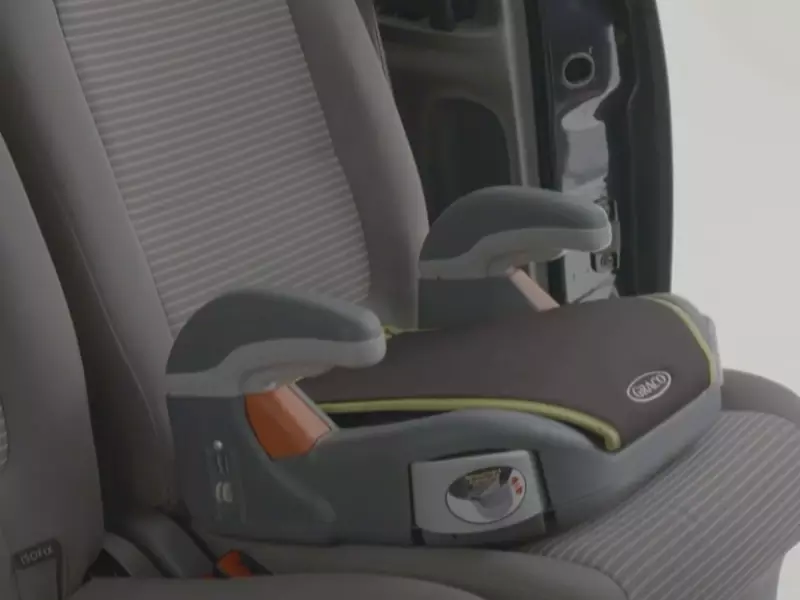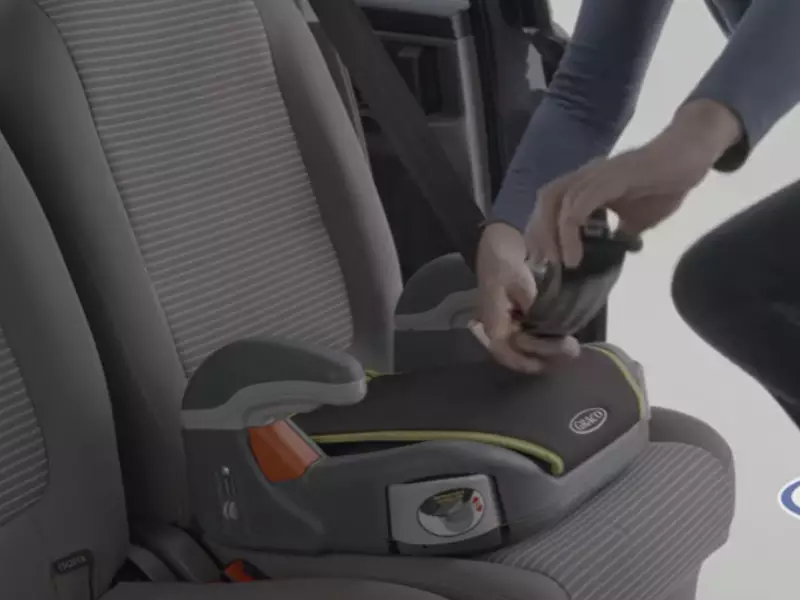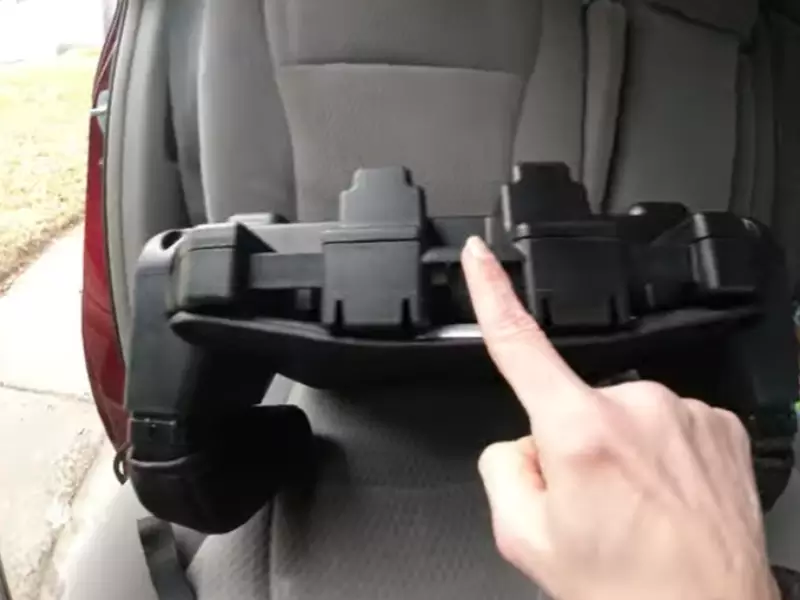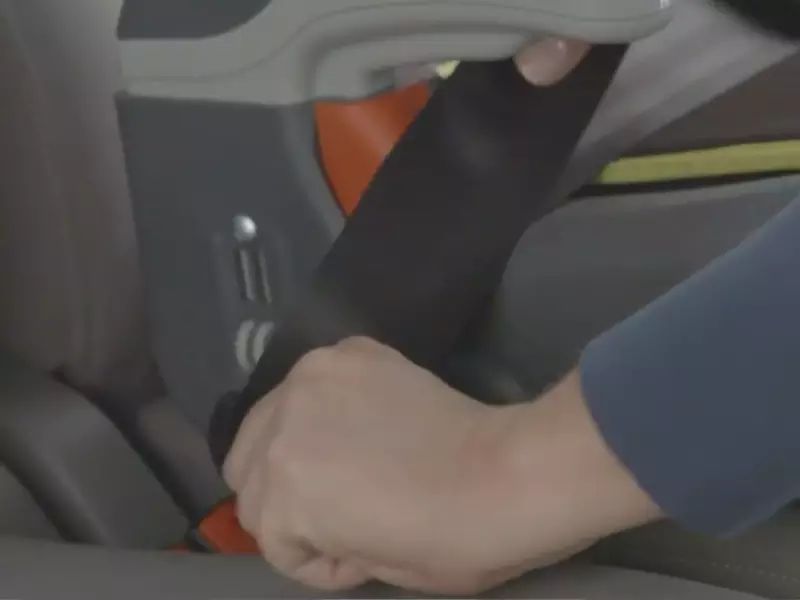To install a backless booster seat, first, position the booster seat on the vehicle seat, ensuring it aligns with the shoulder and lap belt. Choosing the right booster seat is crucial to ensure the safety of your child during car journeys.
Once you have selected a backless booster seat, it is essential to install it correctly to provide optimal protection. In this guide, we will walk you through the simple steps to install a backless booster seat. By following these instructions, you can have peace of mind knowing that your child is securely strapped in and ready for a safe ride.
So let’s dive in and learn how to install a backless booster seat effectively.
Choosing The Right Backless Booster Seat
Ensuring the safety of your child in the car is of utmost importance, which is why choosing the right backless booster seat is crucial. A backless booster seat is designed to elevate your child so that they can use the seat belt correctly and safely. This section will guide you through the factors to consider when selecting a booster seat, the age and weight requirements to keep in mind, and how to ensure the booster seat meets safety standards.

Factors to Consider When Selecting a Booster Seat
When choosing a backless booster seat for your child, there are several key factors to take into account:
- Compatibility with Your Vehicle: Not all booster seats fit every car model. Before making a purchase, check the dimensions and compatibility of the booster seat with your specific vehicle.
- Comfortable Padding and Design: Look for a booster seat with adequate padding to provide your child with the necessary support and comfort during car rides. Additionally, consider the design and style that your child will find appealing.
- Easy Installation and Adjustability: Check for a booster seat that is easy to install and adjust as your child grows. Look for features such as a latch system or a secure belt-positioning clip.
- Cover Material and Cleaning: Kids can be messy, so choosing a booster seat with a removable and washable cover can save you a lot of time and effort.
- Portability and Storage: If you frequently switch between vehicles or need to store the booster seat when not in use, consider a lightweight and compact option that is easy to transport and store.
Age and Weight Requirements for Backless Booster Seats
Backless booster seats are suitable for children who have outgrown their forward-facing car seats but are not yet tall enough to use the vehicle’s seat belt alone. Generally, it is best to transition to a booster seat when your child reaches:
| Age | Weight |
|---|---|
| 4 years | 40 pounds |
| Up to 8 years | 80 pounds |
Note that these requirements may vary depending on your child’s height and the specific booster seat’s manufacturer guidelines. Always refer to the product’s instructions for the most accurate age and weight recommendations.
How to Ensure the Booster Seat Meets Safety Standards
Ensuring that the backless booster seat you choose meets safety standards is crucial to your child’s well-being. Follow these steps to ensure you select a booster seat that adheres to the highest safety standards:
- Check for the Federal Motor Vehicle Safety Standard (FMVSS) label: Look for a booster seat that has been tested and approved under FMVSS regulations. This label ensures that the seat meets the necessary safety requirements.
- Research safety ratings: Before making a decision, check for safety ratings and reviews of different booster seat models. Look for seats that have passed rigorous crash tests and are highly regarded for their safety features.
- Inspect for recalls: Visit the National Highway Traffic Safety Administration (NHTSA) website to check for any recalls on the booster seat you are considering. It is important to ensure that the chosen seat has not been recalled for safety reasons.
- Register your purchase: After selecting a booster seat, be sure to register your purchase with the manufacturer. This will ensure that you receive any necessary safety updates or information in the future.
By considering these factors, age and weight requirements, and safety standards, you can confidently choose a backless booster seat that will keep your child safe and secure during car rides.
Installing A Backless Booster Seat In Your Vehicle
When it comes to the safety of your child in the car, installing a backless booster seat correctly is crucial. A backless booster seat provides your child with the necessary height to ensure that the seat belt fits properly. In this guide, we will walk you through the process of installing a backless booster seat in your vehicle, ensuring a secure and snug fit for your little one.
Understanding the different types of seat belts
Before diving into the installation process, it’s important to understand the different types of seat belts commonly found in vehicles. There are two main types of seat belts: the lap and shoulder belt and the lap belt only.
Lap and shoulder belt: This type of seat belt is the most common and provides the necessary restraint and protection for your child. It consists of a lap belt that goes across the hips and a shoulder belt that goes across the chest and shoulder.
Lap belt only: Some older vehicles or middle seats in minivans may have lap belts only. In these cases, a backless booster seat is not recommended as it requires a shoulder belt for proper restraint.

Step-by-step guide to installing a backless booster seat
Follow these steps to ensure the safe and proper installation of a backless booster seat in your vehicle:
- Read the manufacturer’s instructions: Start by thoroughly reading the instructions provided by the booster seat manufacturer. The instructions will provide specific guidance on how to install the seat in your particular vehicle.
- Position the booster seat: Choose a seating position in your vehicle where the booster seat can be securely installed. Typically, the backless booster seat should be placed in the rear seat of the vehicle.
- Prepare the seat: Clear the seating area of any obstructions, such as toys or debris. Ensure that the vehicle seat is in an upright position and not reclined.
- Secure the booster seat: Place the backless booster seat on the vehicle seat. Make sure it is centered and sits flush against the backrest. If your booster seat has a non-slip base, ensure that it is securely gripping the vehicle seat.
- Position the child: Have your child sit on the booster seat and guide them to place the seat belt across their hips and shoulder. Make sure the seat belt is not twisted.
- Buckle the seat belt: Instruct your child to buckle the seat belt, ensuring that it is properly latched and secure.
- Check for a snug fit: Adjust the seat belt if necessary to achieve a snug and comfortable fit for your child. The lap belt should lie low across their hips, and the shoulder belt should cross their shoulder and chest without touching their neck.
It’s important to note that every booster seat and vehicle may have slight variations in the installation process. Therefore, always consult the manufacturer’s instructions for your specific model and make adjustments accordingly.
Tips for achieving a secure and snug fit
Follow these tips to ensure a secure and snug fit when installing a backless booster seat:
- Double-check the seat belt: Ensure that the seat belt is securely buckled and properly latched.
- Eliminate slack: Remove any slack or looseness in the seat belt. A snug fit is essential for optimal protection.
- Avoid bulky clothing: Encourage your child to wear thin layers instead of bulky clothing, as it may interfere with the proper fit of the seat belt.
- Regularly check the fit: As your child grows, regularly check the fit of the booster seat and make adjustments as needed to ensure continued safety.
By understanding the different types of seat belts, following the step-by-step installation guide, and implementing the provided tips, you can confidently install a backless booster seat in your vehicle and provide your child with the protection they need while on the road.
Ensuring Safety And Proper Use
When it comes to ensuring the safety of your child while traveling by car, installing a backless booster seat correctly is of utmost importance. A backless booster seat is designed to elevate your child, allowing the seat belt to fit properly over their shoulder and across their lap. However, it’s crucial to remember that simply installing the booster seat is not enough. You also need to check the seat belt fit on your child, avoid common mistakes, and perform regular maintenance and inspection to ensure proper use. In this article, we will guide you through these essential steps to provide your child with a safe and comfortable car ride.
Checking the seat belt fit on your child
To ensure maximum safety, it’s vital to check the seat belt fit on your child after installing the backless booster seat. Follow these steps:
- Make sure the lap belt fits snugly across your child’s upper thighs, not the stomach area.
- Ensure the shoulder belt sits across the center of your child’s shoulder, not on their neck or arm.
- Check that the lap belt does not ride up on your child’s abdomen.
- Adjust the position of the booster seat if necessary to achieve the correct fit.
By taking the time to check the seat belt fit on your child, you can provide them with optimal protection during car journeys.

Common mistakes to avoid when using a booster seat
While using a backless booster seat, it’s crucial to avoid common mistakes that can compromise your child’s safety. Here are some errors to steer clear of:
- Using a booster seat too soon: Ensure that your child meets the minimum height and weight requirements recommended by the manufacturer before transitioning to a booster seat.
- Not buckling up: Always remember to buckle up the booster seat when your child is not using it to prevent it from becoming a projectile in case of an accident.
- Using an expired or damaged seat: Regularly inspect your booster seat for signs of damage or expiration, such as worn-out straps, cracked base, or missing parts. If any issues are detected, replace the booster seat immediately.
- Placing the booster seat in the wrong position: Ensure that the backless booster seat is positioned in the rear seat of the vehicle, never in the front seat equipped with an airbag.
By avoiding these common mistakes, you can ensure that your child is safe and secure in the backless booster seat.
Regular maintenance and inspection of the booster seat
To maintain the safety and longevity of the backless booster seat, it’s essential to perform regular maintenance and inspection. Here are some key steps to follow:
- Read the manufacturer’s instructions: Familiarize yourself with the specific maintenance requirements provided by the seat’s manufacturer.
- Regularly clean the seat: Remove the seat cover according to the manufacturer’s instructions and clean it using a mild detergent. Make sure to dry it thoroughly before reinstalling.
- Examine for wear and tear: Inspect the booster seat for any signs of wear, such as frayed straps or damaged buckles. Replace any worn-out parts immediately.
- Store the seat properly: When not in use, store the backless booster seat in a clean and dry area, away from direct sunlight and extreme temperatures.
By adhering to these maintenance and inspection guidelines, you can ensure that your child’s backless booster seat remains safe and reliable.
Buckling Up: Step-By-Step Guide To Using A Backless Booster Seat
Installing a backless booster seat is an important step in ensuring your child’s safety while traveling in a car. One crucial aspect of using a backless booster seat correctly is properly buckling your child into it. In this guide, we’ll walk you through the step-by-step process of buckling up your child, adjusting the seat belt for a secure fit, and teaching your little one about the importance of wearing a seat belt.
How to properly buckle your child into a backless booster seat
When it comes to buckling up your child in a backless booster seat, following the correct procedure is vital. Take a look at these steps:
- Place the booster seat on the vehicle seat, ensuring that it is centered.
- Seat your child on the booster and pull the seat belt across their lap.
- Make sure the seat belt lies flat across their thighs, not their stomach.
- Insert the seat belt latch plate into the buckle until you hear a click.
- Check that the seat belt is snug and properly positioned. It should not be twisted or loose.
- Take the shoulder belt and position it across your child’s shoulder, avoiding their neck.
- Ensure the shoulder belt is secure and not twisted.
Adjusting the seat belt for a secure fit
To guarantee a secure fit, follow these tips to adjust the seat belt:
- Ensure the lap belt lies low across your child’s hips, touching their upper thighs.
- The shoulder belt should cross their shoulder and chest comfortably, away from their neck and face.
- If the seat belt is not positioned correctly, use the appropriate mechanism in your vehicle to adjust its height.
- Double-check that the seat belt fits properly after making adjustments.
Teaching your child the importance of wearing a seat belt
Instilling good habits in your child at an early age is crucial. Teach them about the significance of wearing a seat belt consistently, and explain that it is essential for their safety. Here are a few tips to incorporate into your teaching approach:
- Lead by example and always wear your own seat belt when driving.
- Use simple and age-appropriate language to explain why seat belts are important.
- Discuss potential consequences of not wearing a seat belt, such as injuries or accidents.
- Make wearing a seat belt a regular habit and remind your child to buckle up before every trip.
By following these step-by-step guidelines for buckling up your child, adjusting the seat belt, and teaching the importance of wearing a seat belt, you can ensure their safety during each car ride. Remember, a few minutes spent ensuring their seat belt is correctly fastened can lead to a lifetime of protection.

Traveling Safely With A Backless Booster Seat
When it comes to traveling with children, safety is of utmost importance. Using a backless booster seat is a great way to ensure your child’s safety while on the road. This article will provide you with valuable guidelines, best practices, and answers to common concerns about using a booster seat, making your journey safe and worry-free.
Guidelines for using a booster seat in different vehicles
Installing a backless booster seat can vary depending on the type of vehicle you have. Whether you have a sedan, SUV, or minivan, following these guidelines will help ensure a secure installation:
- Check your vehicle’s user manual to determine the ideal seating position for a booster seat.
- Place the booster seat in the back seat, as this is the safest location.
- Ensure the seat belt fits correctly across your child’s lap and shoulder, without any twists or slack.
- Secure the booster seat tightly using the vehicle’s seat belt or LATCH system, if available.
- Regularly check the installation to make sure the booster seat remains securely in place.
Remember, proper installation is crucial for the booster seat to function effectively and keep your child safe in the event of a collision.
Best practices for long journeys with a booster seat
Long journeys can be exhausting, especially when traveling with children. To ensure a comfortable and safe ride, consider implementing the following best practices:
- Make sure your child is within the weight and height limits specified by the booster seat manufacturer.
- Encourage your child to sit upright and avoid slouching in the booster seat.
- Pack essentials such as snacks, drinks, and entertainment to keep your child occupied during the journey.
- Take regular breaks to stretch, use the bathroom, and reduce fatigue.
- Prioritize safety over convenience by avoiding distractions while driving.
Following these best practices will not only ensure your child’s safety but also contribute to a smooth and enjoyable journey for the whole family.
Final Tips And Recommendations
Installing a backless booster seat is an important step to ensure your child’s safety while traveling. As responsible parents, we always want to make sure we are doing everything we can to protect our children. Here are some final tips and recommendations to keep in mind when installing a backless booster seat.
When to transition your child out of a backless booster seat
Knowing when to transition your child out of a backless booster seat is crucial for their safety. While there is no specific age requirement, it is recommended to make this transition when your child reaches a certain height and weight. Typically, you should consider transitioning your child out of a backless booster seat when:
- Your child’s shoulder is above the top slot of the backless booster seat’s shoulder belt guide.
- Your child’s ears are above the top of the vehicle seat back.
- Your child’s weight exceeds the maximum weight limit specified by the booster seat’s manufacturer.
Keep in mind that these guidelines may vary depending on your booster seat’s specifications, so always refer to the manufacturer’s guidelines for accurate information.
Additional safety features to consider when purchasing a booster seat
When purchasing a booster seat for your child, it’s essential to consider additional safety features that could enhance their protection. While every booster seat must meet minimum safety standards, some seats offer additional features that may give you an extra peace of mind. Here are a few safety features to consider:
- Side-impact protection: Look for a booster seat that offers built-in side-impact protection to safeguard your child in the event of a collision.
- Adjustable headrest and shoulder belt positioners: These features allow you to customize the seat’s fit, ensuring optimal safety and comfort for your child.
- LATCH system compatibility: If your vehicle is equipped with the Lower Anchors and Tethers for Children (LATCH) system, consider a booster seat that is compatible with this system for easier and more secure installation.
- Comfort features: Along with safety, your child’s comfort is key. Look for booster seats with padding, breathable materials, and adjustable options.
Remember, the more safety features a booster seat offers, the better protection it provides for your child.
Resources for staying up to date on current safety guidelines
As technology and safety guidelines continue to evolve, it’s essential to stay informed about the latest safety guidelines for booster seats. Here are some resources you can refer to:
| Resource | Description |
|---|---|
| National Highway Traffic Safety Administration (NHTSA) | An official government website providing detailed information on car seat safety, including booster seats. |
| Safe Kids Worldwide | A non-profit organization dedicated to preventing childhood injuries, offering valuable resources on car seat safety. |
| HealthyChildren.org | An online resource provided by the American Academy of Pediatrics, offering expert advice and guidelines on child safety and development. |
By regularly checking these resources, you can stay up to date on the most current safety guidelines, ensuring that your child’s booster seat is installed and used correctly.
Frequently Asked Questions On How To Install A Backless Booster Seat
Do Backless Booster Seats Need To Be Anchored?
No, backless booster seats do not need to be anchored.
Are Backless Boosters Strapped In?
No, backless boosters are not strapped in.
What Age Is Safe For Backless Booster?
Backless boosters are safe for children who have reached the age of 8 or a height of 4 feet 9 inches. Ensure they can sit properly with their back against the seat and use the seat belt correctly. Follow local laws and guidelines for optimal safety.
How Do You Anchor A Booster Seat In A Car?
To anchor a booster seat in a car, follow these steps:
1. Place the booster seat in the desired position on the back seat.
2. Thread the vehicle’s seatbelt through the back of the booster seat.
3. Buckle the seatbelt and make sure it is properly secured.
4. Ensure the booster seat is stable and doesn’t move around.
5. Double-check that the seatbelt and booster seat are properly fastened before driving.
Conclusion
Installing a backless booster seat is a simple yet crucial step in ensuring your child’s safety while on the road. By following the step-by-step instructions outlined in this guide, you can easily install the booster seat correctly and confidently. Remember, the safety of your child should always be a top priority, and proper installation of the booster seat is essential.
So, take the time to follow the instructions carefully and ensure a safe and comfortable ride for your little one.
